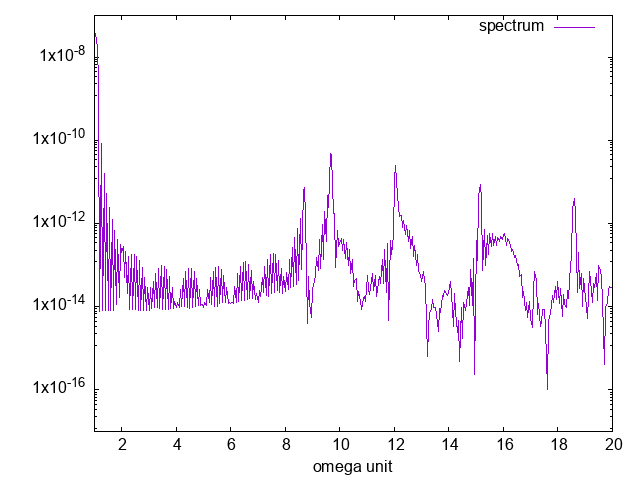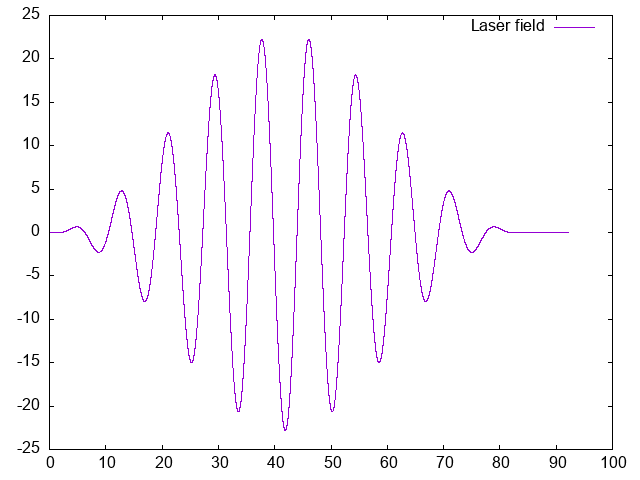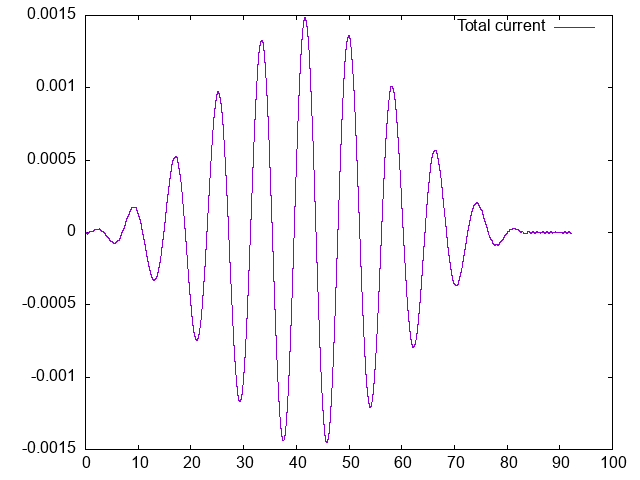Here I present a simple example for High-harmonic generation on a 1-dimensional periodic chain with the octopus code.
Hereafter the ground-state input, I used the DOJO pseudo-potential with PBE functional:
CalculationMode = gs UnitsOutput = ev_angstrom ExperimentalFeatures = yes PeriodicDimensions = 1 Spacing = 0.5 %LatticeParameters 2.0*angstrom | 4*angstrom | 4*angstrom % %Species "H" | species_pseudo | file | "H.dojo.upf" % %Coordinates "H" | -0.3707*angstrom | 0.0 | 0.0 "H" | 0.3707*angstrom | 0.0 | 0.0 % %KPointsGrid 24 | 1 | 1 % KPointsUseSymmetries = yes %SymmetryBreakDir 1 | 0 | 0 %
then the real-time input with the laser field:
CalculationMode = td FromScratch = yes FromScratch = yes UnitsOutput = ev_angstrom ExperimentalFeatures = yes PeriodicDimensions = 1 Spacing = 0.5 %LatticeParameters 2.0*angstrom | 4*angstrom | 4*angstrom % # TheoryLevel = independent_particles %Species "H" | species_pseudo | file | "H.dojo.upf" % %Coordinates "H" | -0.3707*angstrom | 0.0 | 0.0 "H" | 0.3707*angstrom | 0.0 | 0.0 % # Frequency corresponding to 0.75 eV. omega = 0.02756196963750000000 period = 2*pi/omega stime = 10*period TDPropagationTime = stime+period TDPropagator = exp_mid TDExponentialMethod = lanczos TDExpOrder = 10 TDTimeStep = 0.1 %TDExternalFields vector_potential | 1 | 0 | 0 | omega | "envelope_function" % electric_amplitude = -c/omega*(sqrt(1*10^9)/sqrt(3.509470*10^16)) # in atomic units %TDFunctions "envelope_function" | tdf_from_expr | "electric_amplitude*(sin(pi/stime*t))^2*(1-step(t-stime))" % %TDOutput laser total_current % %KPointsGrid 24 | 1 | 1 % %SymmetryBreakDir 1 | 0 | 0 % KPointsUseSymmetries = yes
you can plot the laser field with the gnuplot and the command:
p 'td.general/laser' u 1:3 w l
and the total current with:
p 'td.general/total_current' u 1:3 w l
then the current can be post-process with the command oct-harmonic-spectrum with the input:
omega = 0.02756196963750000000 PropagationSpectrumMaxEnergy = 30*omega PropagationSpectrumEnergyStep = omega/20
the spectrum is written in the file hs-mult.x, and you can plot it in logarithmic scale:


